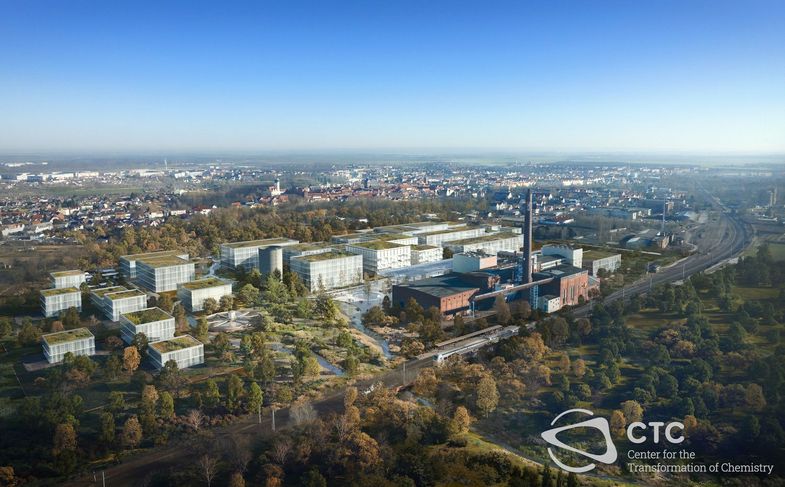The development of the CTC is to receive up to 170 million euros per year in funding from the federal government and the states of Saxony and Saxony-Anhalt, with the federal government providing 90 per cent of the budget. “Leipzig University is proud to be a partner of this new major research centre, because the CTC will pave the way for sustainable development of the former lignite mining regions. We will help tackle the major new challenge faced by the chemical industry: that of becoming largely independent of fossil fuels,” said the Rector of Leipzig University, Professor Eva Inés Obergfell.
Key strength in digital transformation an AI
The major research centre – to which scientists such as Professor Roger Gläser and Professor Detlev Belder from Leipzig University will contribute their expertise – is intended to boost existing innovation in the Central German mining district, a region affected by structural change, and offer it a new and sustainable perspective for development. The establishment of the CTC with its strength in research and innovation, especially with regard to the digital transformation and AI, will promote corresponding activities in the field of research and development on the industrial side and make the region more future-proof by generating spin-offs and attracting businesses. As an attractive place to work where technology and production meet, the district should become a magnet for young, highly skilled workers, thus counteracting the declining number of people of working age in the region.
Besides addressing one of the most pressing challenges of the 21st century, the CTC will at the same time establish and nurture a place of cutting-edge research that attracts specialists as well as partner institutions from science and industry, offers great potential for drawing new companies to the area, and is thus able to support long-term structural change in the Central German mining district. The major research centre in the Central German mining district will pick up on the long tradition of chemical industry in the region around Halle, Merseburg and Bitterfeld, and integrate the value chains as well as application and demand-oriented research approaches that are highly important for the energy industry, mobility, the food and health industries, agriculture, and the mechanical engineering sector. Explaining the aims of the CTC, MPIKG Director Peter H. Seeberger says: “In order to secure the supply and functioning of Germany’s entire economy as a place to do business, it is imperative that we rethink starting materials, processes and products, and seek to transform the hitherto linear chemical industry, which also produces large amounts of carbon dioxide as well as toxic waste and wastewater, into a robust circular economy for the future.”
The CTC will be built in Delitzsch, around 20 kilometres north of Leipzig. Over the next few years, the CTC will take shape on the site of a former sugar factory as the first research facility to date in the district of North Saxony.
Close cooperation between the universities of Leipzig and Halle
In addition to the expertise of numerous scientists, Leipzig University and the Martin Luther University Halle-Wittenberg are also contributing the concept of an independent research, teaching and organisational unit as an institutional bridge to the major research centre. The joint structure is intended to contribute to transdisciplinary, basic and application-oriented research and career advancement, but also to promote study and teaching as well as academic continuing education. The hope is that the two universities’ joint concept will create economic prospects for the people and communities in the Central German mining district after lignite mining is phased out.
In addition to the CTC, the “German Center for Astrophysics”, led by astrophysicist Professor Günther Hasinger, will be funded in Lusatia as a second major research centre to address structural change in the lignite areas of Lusatia in Saxony and the Central German mining district. A total of six concepts were submitted for the final round for two major research centres.

